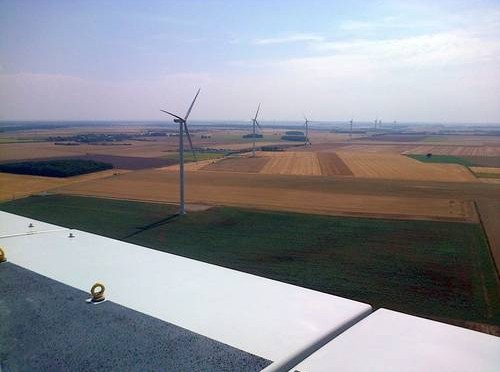The German federal government plans to amend the Renewable Energies Act (EEG) in August 2014. This legislative initiative has cast long shadows and unleashed nervousness in the capital markets. On April 8, the cabinet adopted the proposals which had been tabled by the Ministry of Economics for a bill to be passed by parliament. Nordex CEO Jürgen Zeschky says “Overall, we are satisfied with the results. The cap on expansion provides the wind power industry with sufficient growth potential and the adjusted tariffs will not threaten the commercial viability of the planned projects in most cases”.
What does this mean specifically? In the interest of ensuring controlled and stable expansion of onshore wind power, the government has introduced a cap of 2,400 to 2,600 MW net per year on new installations. One central aspect is that this cap does not apply to repowering. This means that when old turbines are replaced by new ones, the permitted volume will be able to exceed the cap of 2,600 MW. This is im-portant because the wind power industry sees repowering as a market offering considerable potential for the future. Although repowering business accounted for only around nine percent (270 MW) of gross new installations in 2013, it is expected to grow in the future. Thus, new turbines with a combined capacity of more than 1,000 MW, which have a service life of 20 years, were installed in Germany in 1999 for the first time. Explains Zeschky: “In the past, the cap was only exceeded in 2002 and 2013. The fact that repowering in particular does not count towards the cap ensures that our interests are protected. In any case, it makes sense to create an incentive for modernising the fleet of wind parks.”
In addition to volume, the revised legislation will also exert decisive influence on pricing. This debate in particular has resulted in considerable misunderstandings among the public. On balance, however, the wind power industry has every right to be satisfied with the outcome: although the statutory tariffs are been adjusted downwards to remedy the effects of over-subsidisation and to ease the strain on consumers, most of the planned projects will remain commercially viable. This also applies to onshore locations, for which more severe cuts were initially planned. The bill which has now been adopted makes allowance for the fact that many projects are being planned at onshore locations and has lifted the average remuneration at these sites to a realistic level. This was important to the German states in particular, in order to encourage decentralised power station capacities.
Says Zeschky: “The planned reform of the Renewable Energy Act provides a good basis for the continued growth of wind power in our domestic market. This is particu-larly significant as many European countries are guided by Germany’s energy policy.”
Key elements of the amended legislation at a glance:
- Target: Cost-efficient expansion of renewable energies to 80% by 2050 (40 – 45% by 2025, 55 – 60% by 2035)
- Onshore wind power: Cap on expansion (p.a.) 2,400 – 2,600 MW plus repowering
- Remuneration: 4.95 ct/kWh (base price); 8.9 ct/kWh guaranteed for 5 years (Extension of initial remuneration depending on reference yield relative to production)
http://santamarta-florez.blogspot.com.es/2014/04/reform-of-eeg-safeguards-future-of.html

